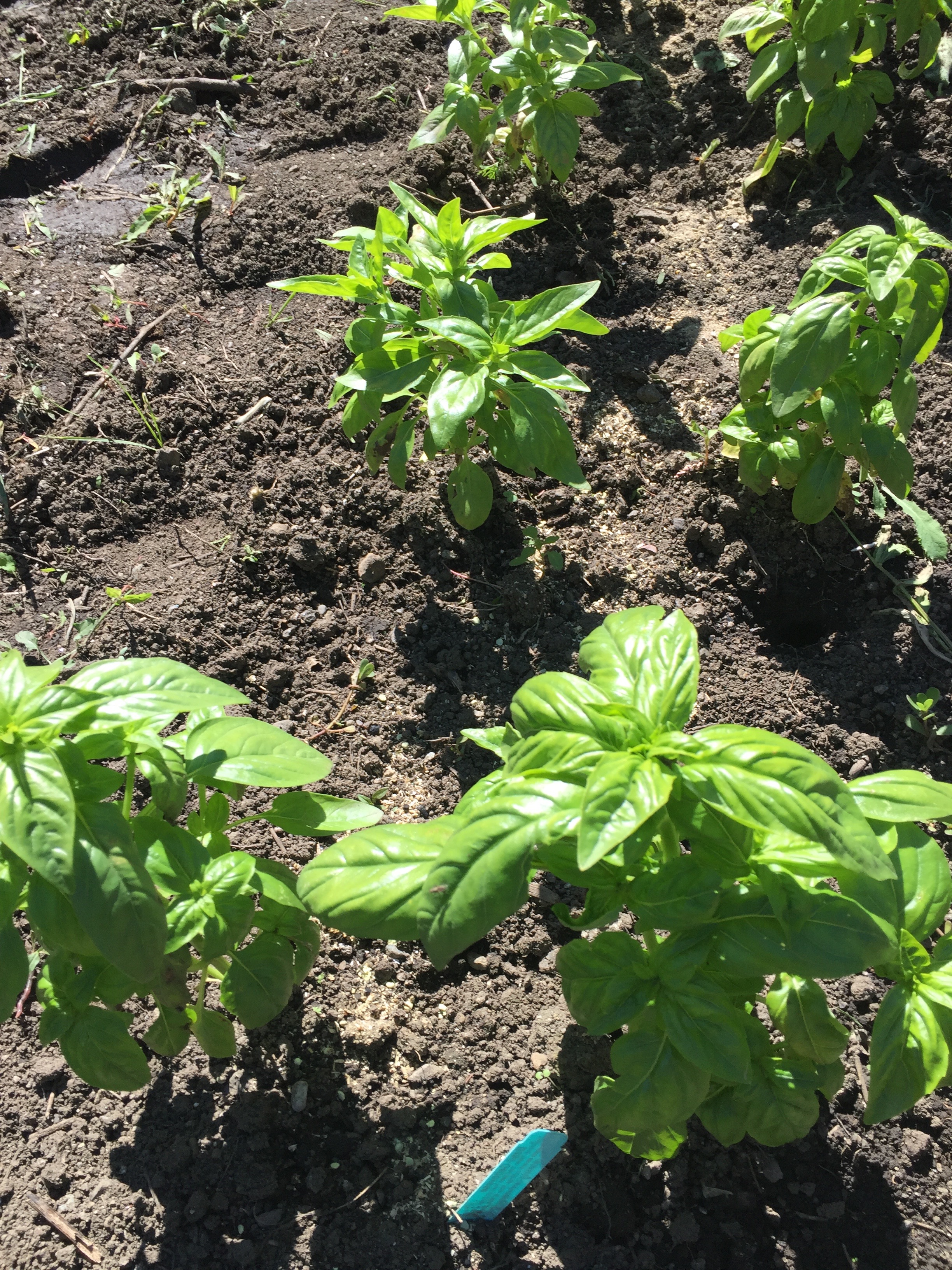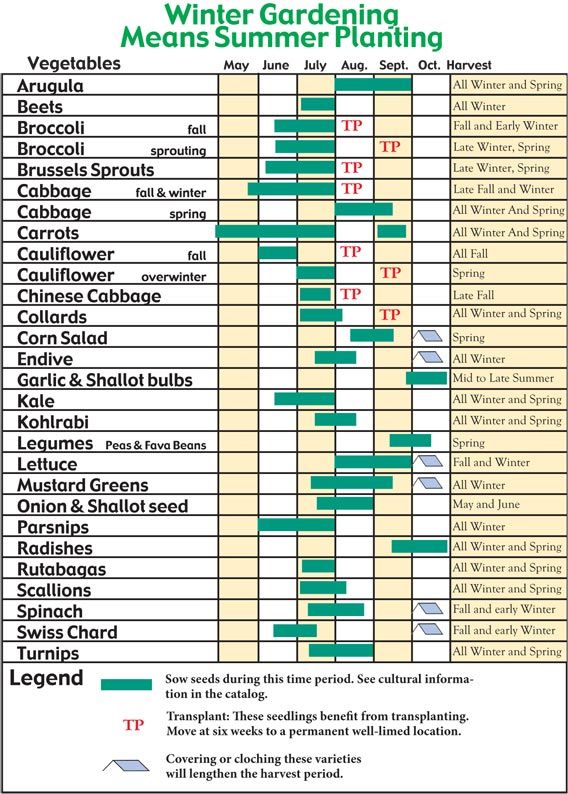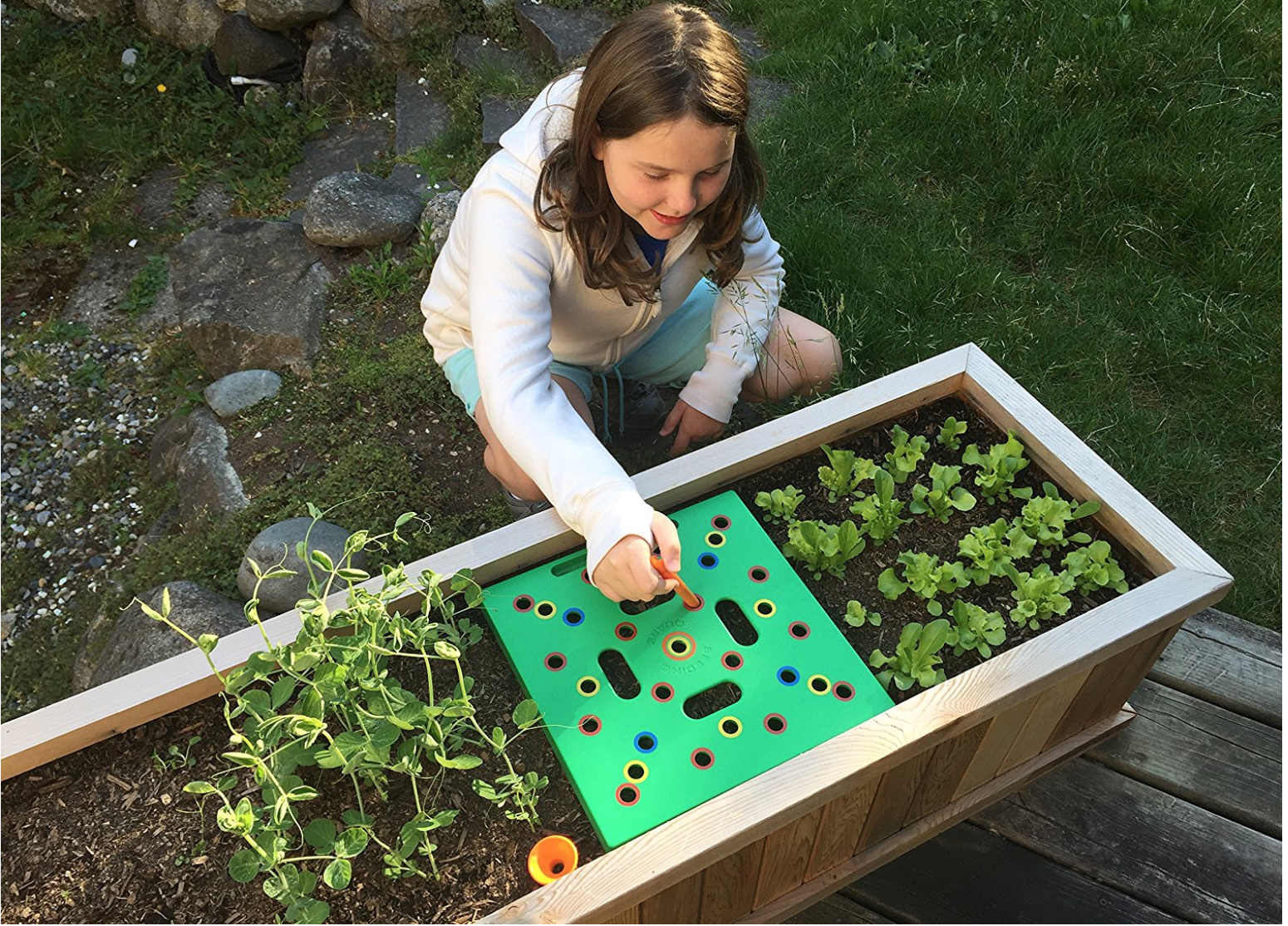 It’s spring! With the warmer temperatures and green grass growing, it’s time to get outside and start growing food.
It’s spring! With the warmer temperatures and green grass growing, it’s time to get outside and start growing food.
From getting children to eat more vegetables to eating food picked fresh to treating depression, gardening has many benefits. Despite the merits of growing vegetables, gardening can be intimidating. You may think you don’t have enough yard space, enough time, lack a green thumb, etc. You may not know where to begin.
Here are 7 simple tips to grow the perfect garden even with kids.
1. Spend time in your garden every day
Sometimes gardening can seem overwhelming like a full-time job. You don’t need to dedicate countless hours if you dedicate small amounts of time each and every day. Make it a family event and twice as much gets done. Just 15 minutes of weeding every day will keep your garden looking perfect.
Have you ever experienced garden envy? I do. One thing the gardens I admire have in common is the daily committment of the gardeners.
I like to transition from school to home in the garden. This little time connecting with nature makes homework time more tolerable.
The rest of the tips will also save you time in the garden.
 2. Use a garden planner
2. Use a garden planner
Sometimes it’s hard to know when it is the right time to plant certain veggies. A garden planner is helpful. Many seed catalogues come with garden planners. If you choose a seed company close to your location, then the planner will be spot on.
Many garden stores give out free garden planners. We were just given one that you slide a red line to your last frost date. It tells you when to plant and when to expect harvest. There are also some online versions of garden planners you can adjust to your zip code or zone.
3. Use high quality seeds
There is a big difference in seed quality. If you choose cheap seeds at a hardware store, you will find germination rates inconsistent, even from big brands like Burpees. In addition, these seeds may be treated with chemicals like antimicrobials or fungicides.
It’s best to choose seeds from a latitude and climate close to your own. Furthermore, organic or biodynamic seeds are the best choice for your soil health.
 4. Get perfect spacing with the Seeding Square
4. Get perfect spacing with the Seeding Square
When it comes to the garden, I can be a control freak on spacing. My children want to help, and I certainly don’t want to discourage that, but at the same time I don’t want 50 little lettuce plants coming up in one square foot. Even with my tendency to manage seed planting, inevitably an area of overplanting occurs. Last year it was the kale and arugula that was crowded and need of thinning. Thinning seems like such a waste of seed and potential food.
One solution to perfect seed spacing is the Seeding Square. This unique device is color coded. It comes with a planting guide to help you figure out proper spacing. To use, you simply press the seeding square into the soil, use the poker in the appropriately colored hole for the seeds you are planting (reference the planting guide), then deposit the seeds.
The Seeding Square gives a fun plant-by-colour approach placing each seed with the exact amount of space and depth it needs while keeping your vegetable garden in perfectly straight rows, and all without you having to do any of the guess work! You can look forward to a much bigger crop and a reduction of those pesky weeds! Great for all sizes of garden, all experience level and all types of vegetables. Grow your food! There are many benefits to the Seeding Square such as it simplifies the planting process, saves you money on food bills, can double or even triple the harvest size, optimizes and organizes your garden space, allows for fewer weeds, gives depth accuracy for seed holes, plants grow in a beautiful uniform grids, the planting is done quickly, and it’s great for teaching kids and new gardeners. The Seeding Square is small for easy storage and comes in a reusable storage bag. All materials are RoHS compliant. The Seeding Square also comes a Funnel, Planting Guide, Wand/Spoon, and Instructions. The Funnel makes it easy to deposit seeds in holes since it fits snugly into the holes. Then it clicks into the back of the center hole for storage. The Planting Guide is a simple to use plant-by-color chart with a complete list of standard garden veggies and simple instructions for each. The Wand/Spoon, which magnetizes to the Seeding Square, has depth markings on the side for poking holes and then the Spoon scoops and deposits small seeds.
The Seeding Square is great for children, but any gardener can benefit. It helps you grow more food by maximizing the planting space for the most yield. It is perfect for raised boxes and beds, garden rows, or square foot gardening. It also cuts down on weeds!
I really like how my hands stay clean when planting with the seeding square. I can’t plant seeds with my gloves on, and inevitably my hands become soiled. Then the inside of my gloves become dirty when I put them back on.
The seeding square is great for young children too. It makes planting sort of like a game. It would be perfect for preschool units on gardening.
5. Mulch!
Mulching is important for water conservation, weed control, and soil health. A little time spent mulching will save a lot of time later on. Organic mulch is best. You can purchase straw (make sure it is not seeded) or use grass clippings. I don’t like plastic mulch or landscape fabric. As it deteriorates, there is no way to completely remove it from your garden. 20 years later, I still find pieces of red plastic mulch I used on strawberries. The strawberries are gone, but the mulch remains.
6. Use a water timer
Some people really enjoy hand watering their garden. My time is better spent weeding and planting. A garden water timer keeps your garden hydrated. I set mine for nighttime watering when evaporation rates are low. The water timer also makes it easy to take a vacation from your garden without finding a neighbor to water while you are away. This simple device is an investment that will last for years. It makes watering precise once you figure it out.
7. Feed organically!
As a general rule, I try to fertilize after weeding. I don’t weed that frequently, so it works out. You can over feed and burn your plants, but the opposite effect of under feeding can be just as detrimental. Organic fertilizer is very important for your soil health and maximum nutritional content in your garden food. Organic food is higher in antioxidants than its conventional counterparts. Plus, you don’t want your children exposed to chemicals when working in the garden.
Gardening is very rewarding. It benefits both mind and body, and anyone can do it. These 7 simple tips will help you get started this spring.
I love to spend at least 1 hour in the garden. This is the right place to connect with nature and growing some vegetables for my own health is a good job. I agree with you, we should spend at least 15 minutes on daily basis in the garden.
I love the feeling of sore garden muscles.